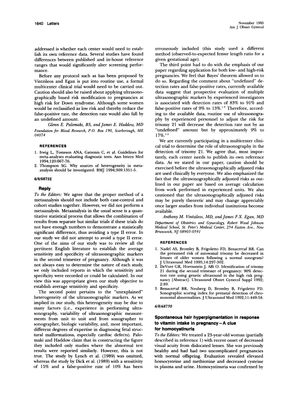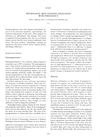Spontaneous hair hyperpigmentation in response to vitamin intake in pregnancy—A clue for homocystinuria
November 1995
in “American Journal of Obstetrics and Gynecology”

TLDR Taking vitamin B6 corrected a pregnant woman's metabolic disorder, which changed her hair color.
The document reports a case of a 23-year-old woman with homocystinuria, an inherited disorder of amino acid metabolism, who experienced spontaneous hair hyperpigmentation during pregnancy in response to vitamin intake. The woman had elevated levels of homocysteine and methionine and decreased cysteine in her plasma and urine, and reduced cystathionine B synthase activity in skin fibroblasts. Treatment with 250 mg of vitamin B6 corrected her biochemical abnormalities and resulted in her blond hair darkening after six weeks. This change in hair color had previously occurred during her pregnancies when she self-administered vitamins and reversed post-delivery when vitamin intake was discontinued. In vitro studies showed that homocysteine inhibits tyrosinase activity in human melanocytes, explaining the hypopigmentation in untreated homocystinuric patients and repigmentation when the biochemical abnormality is corrected. The authors suggest that hyperpigmentation in pregnancy can be physiological but may also indicate an underlying metabolic disorder like homocystinuria. They emphasize the importance of recognizing this phenomenon as patients with homocystinuria require careful management due to increased thromboembolic complications during pregnancy and delivery. The letter aims to alert obstetricians to the potential diagnostic significance of hair color changes in response to vitamin intake during pregnancy.
View this study on ajog.org →
Cited in this study

research PHYSIOLOGIC SKIN CHANGES ASSOCIATED WITH PREGNANCY
Pregnancy often causes skin changes like darkening, stretch marks, and hair growth, which may improve after childbirth.